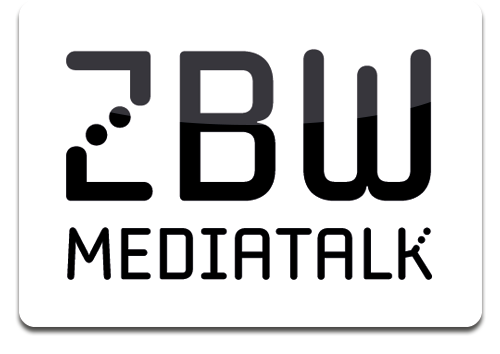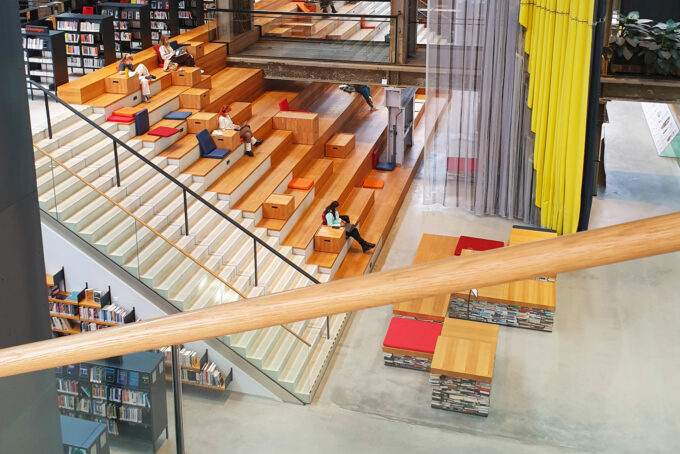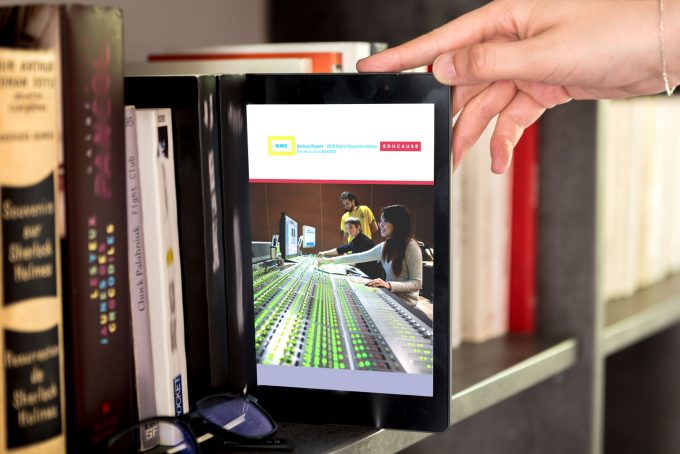
24/7 Opening of University Libraries: New Flexibility for Concentrated Work Leads to Record Start
A sharp rise in demand for library cards, a library that is often busier at weekends than on weekdays, and more visitors than ever before in the institution's history: the record start of the 24/7 opening of the university libraries at TU Berlin and Berlin University of the Arts (UdK Berlin) shows that Sunday opening offers great opportunities, especially for academic libraries. In an interview, Elena Stöhr and Jessica Ullmann describe how the large-scale project unfolded.
we were talking with Elena Stöhr and Jessica Ullmann (University Libraries of TU Berlin and UdK Berlin)

Since May 2025, the university libraries of the TU Berlin and the UdK Berlin have been open around the clock at their joint location. The six-storey library building offers students from all Berlin universities over 1,200 workstations and access to the collections of both universities. These cover all disciplines from natural sciences and engineering to humanities, social sciences and the arts. Elena Stöhr, Head of Public Relations, and Jessica Ullmann, Staff Unit for Innovation Management and Customer Monitoring, from the University Library of the TU Berlin report on the introduction of the new opening hours and their experiences during the first few months.
What led to the decision to implement 24/7 opening hours this year?
The impetus for introducing 24/7 opening at the university libraries of the TU and UdK Berlin came directly from our users. Through various surveys and feedback channels, we repeatedly received requests for extended opening hours – especially for the early morning hours and Sundays. This clear interest showed us that continuously accessible services meet a real need. Thanks to funding from the Berlin Senate Department for Science, Health and Care, we were able to implement this request as part of a pilot project and test how 24/7 operation works in practice.
What issues had to be addressed to organise the 24/7 opening? How did you proceed?
Introducing 24/7 opening hours was a major project. Even though the university libraries of the TU and UdK Berlin at their joint location were already open until midnight from Monday to Saturday, many additional issues had to be clarified for continuous operation – especially for the night hours and Sundays, when no library staff are on site.
The key issue was secure access: who is allowed to enter the building and when, and how do we ensure that only registered users are in the library? We had to consider many practical issues – from security services and emergency procedures to lockers, snack and drink vending machines, cleaning and lighting. Even everyday tasks such as tidying up in the morning or refilling paper in the photocopiers had to be reorganised.
We designed the process in close consultation with all departments involved – from the security company and cleaning teams to IT and our colleagues at the Berlin University of the Arts library, with whom we jointly operate the building. Many aspects were tested, adapted and documented in trial runs. Step by step a structure emerged that functions reliably at night and on Sundays without library staff.
To what extent did you have to digitise or automate parts of the service or infrastructure before the 24/7 opening could be put into practice?
Between 10 p.m. and 8 a.m., anyone with a valid library card from the TU or UdK Berlin can use the library. The card is scanned at a station in the foyer near the security service. The system automatically checks that the card is valid and has not been blocked. We programmed the system ourselves and tailored it precisely to our processes (the code will soon be published on GitHub for reuse). Borrowing and returning items was already possible via machines.
What obstacles did you encounter?
Not everything went smoothly from the start. One of the biggest challenges was to adapt all processes so that they would work without library staff – from access and security to cleaning. In particular, the new cleaning concept for nights and Sundays had to be in place in good time.
In addition, many small but crucial details had to be clarified: How does night-time access work? How do we deal with the use of lockers? At what times are the workstations checked? Who responds to technical malfunctions? In addition, the café located in the building, which is run by an external operator, now also opens on Sundays – this also required coordination and adjustment of processes.
What insights have you gained that could be helpful to other libraries?
One of the most important insights is that Sunday opening has enormous potential, especially for academic libraries. Many students make intensive use of these hours – the library is often busier at the weekend than on weekdays. At the same time, we have learned that longer visiting hours bring new challenges, for example in terms of cleanliness. At night and on Sundays, there are hardly any places to eat in the surrounding area, so more food is brought in – and this means more rubbish.
The enormous demand for library cards was particularly exciting: between May and July, over 4,000 new cards were issued – an increase of more than 500 per cent compared to the same period last year. Initially, this posed a major logistical challenge, as each card had to be activated, checked and correctly assigned. Now, user data is automatically transferred from the application form on our website to the library system, which saves a lot of time and significantly simplifies the process.
Extended opening hours can be a real benefit for libraries – if they are well planned, technically implemented and organisationally supported.
What has been your experience with 24/7 opening so far? What feedback have you received?
The experience with 24/7 opening has been consistently positive. Students in particular appreciate the new flexibility – many tell us that they can finally come when they really want to concentrate on their work, whether that’s early in the morning or in the middle of the night.
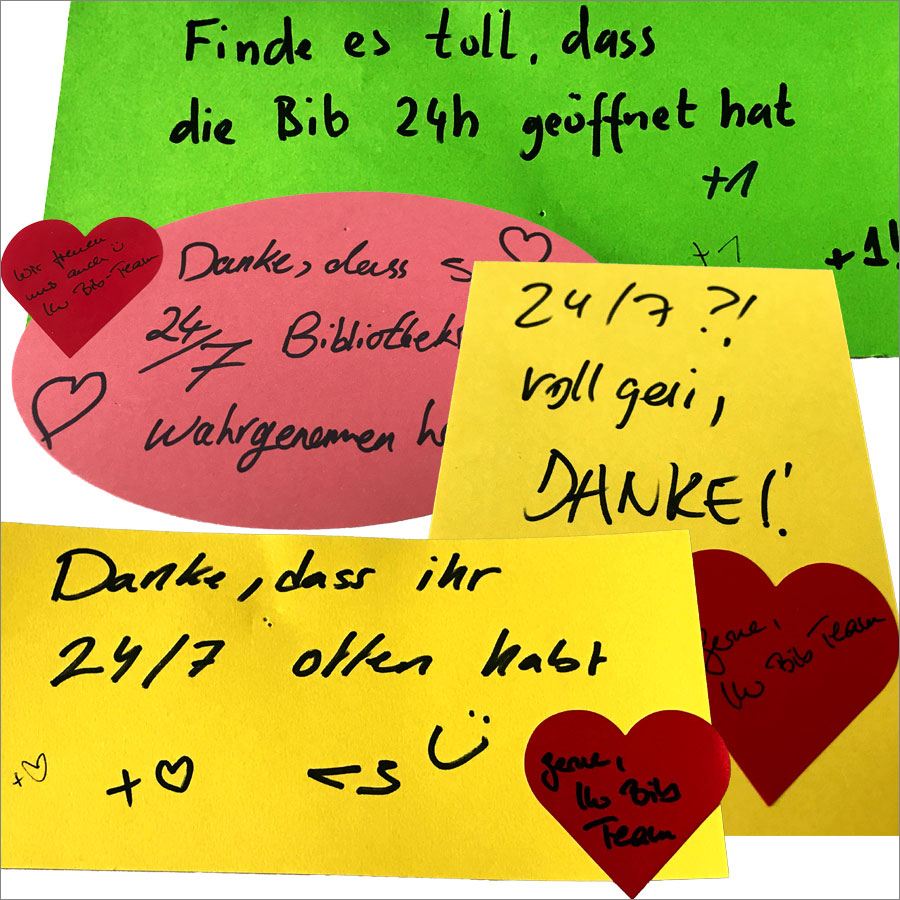
The figures also reflect this: since May, we have recorded more visits than ever before. On some days, there were more than 6,000. July 2025 was the strongest month in the library’s history to date, with almost 37 per cent more visitors than in the previous year.
Our questions were answered by Elena Stöhr and Jessica Ullmann.
This might also interest you:
- Promptathons: Potential for Libraries – and for Open Science?
- AI Inspirations for Libraries: From Study Bots to Conversations with Books
- Artificial Intelligence and Information Literacy: On the art of Quartering Broccoli
- Libraries in the Shareconomy: How the Opportunities are Being Exploited
About the authors:
Jessica Ullmann is responsible for innovation management and customer monitoring at the TU Berlin University Library. She is also deputy head of user services and temporarily heads the “Learning and User Experience” team.
Portrait: UB TU Berlin, Benjamin Mossop©
Elena Stöhr heads the cross-departmental public relations department at the TU Berlin University Library.
Portrait: UB TU Berlin, Christina Giakoumelou©
Photo inside library: dbv, Nadja Wohlleben©
Notes from the feedback wall: UB TU Berlin©
View Comments
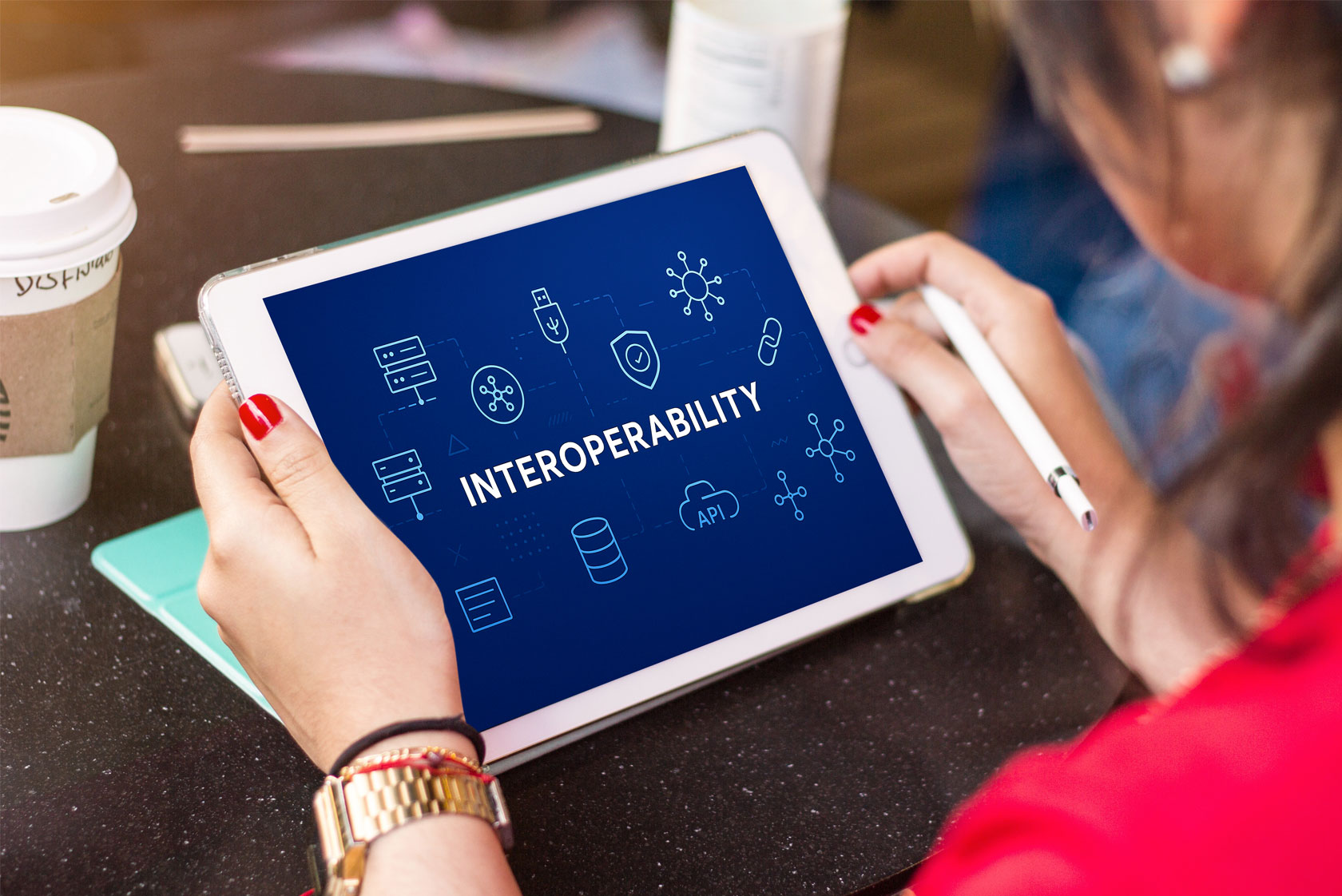
Sharing Insights on Interoperability and Linked Data in Heritage and Research Contexts: Building Bridges Across Disciplines
Interoperability may sound technical, but at its heart, it’s about connection —...
